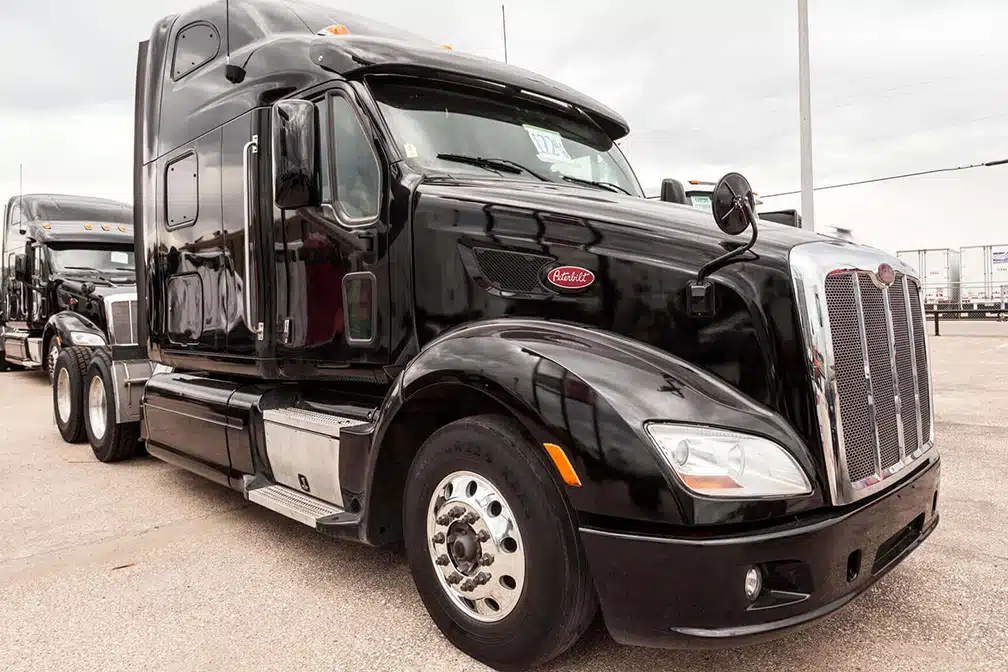In an Effort to Improve Road Safety for All, the FMCSA is Changing the Disqualification Process and Ensure Fair and Accurate Treatment for All Violations.
More
May 19, 2024 1:48 pm

For years there has been growing concern, about the impact of heavy-duty trucks leading to the introduction of stricter emissions rules worldwide. While these regulations aim to cut down on emissions and enhance air quality they can also have effects on the resale market for sleeper trucks. One consequence is that older sleeper trucks that don’t meet the emissions criteria may lose value.
You can read more information about the trucking regulations.
Current emissions standards in regions mandate that heavy-duty trucks must adhere to emission levels. These standards typically measure the levels of pollutants emitted by a truck, such as Nitrogen Oxides (NOx) and Particulate Matter (PM). As emission requirements become more rigorous with time older sleeper trucks may fail to meet these standards. Might need retrofits or modifications to comply.
The expenses involved in retrofitting or modifying a truck to meet modern emission standards can be substantial. This is because many of the emission-reducing components, like Exhaust Gas Recirculation (EGR) systems, Diesel Particulate Filters (DPFs), and Selective Catalytic Reduction (SCR) systems are pricey and challenging to install. Furthermore updating a truck can take up a lot of time. This may necessitate taking the vehicle out of service for an extended period leading to increased costs, for trucking companies.
Therefore some trucking companies might opt to swap out their trucks with newer models that adhere to the latest emissions standards. The newer sleeper trucks often come with advanced emissions control technologies. Are engineered to be more fuel-efficient and reliable compared to their counterparts. This makes them an appealing choice for trucking companies, especially those operating in regions with strict emissions rules.
Read the latest news about the trucking regulations:
The depreciation of trucks can also be influenced by shifts in consumer preferences. With newer trucks becoming more accessible buyers may show interest in purchasing models that do not meet current emissions standards. This decreased demand for trucks can result in lower prices in the secondhand truck market.
Several factors can impact how older sleeper trucks are devalued due to emissions regulations. One critical factor is the emissions standards enforced in an area. Some regions may have emission requirements, than others, which could significantly affect the worth of older trucks.
Additionally, the age and overall condition of a truck can also influence its worth. Newer trucks, in shape, might hold value despite not meeting the most up-to-date emissions criteria.
Another factor impacting the value of trucks is the availability and cost of replacement parts for maintenance. Trucks needing rare parts for upkeep may not attract buyers regardless of their emissions compliance. Likewise, trucks with a history of breakdowns or requiring maintenance may be less appealing to potential buyers.
In summary, the depreciation of trucks due to stricter emissions rules is a multifaceted issue affected by various factors. While it’s evident that emissions regulations can affect the worth of trucks how much they’re impacted relies on factors like emissions standards, the vehicle’s age and condition, and market demand for used sleeper trucks. As emissions rules become stricter over time concerns about devaluation, in models are likely to persist among trucking companies and buyers in the truck market.
For more information and articles from the trucking industry, follow us on Facebook or subscribe to our Truck Driver News newsletter.
In an Effort to Improve Road Safety for All, the FMCSA is Changing the Disqualification Process and Ensure Fair and Accurate Treatment for All Violations.
MoreIn an era where the safety of our roads is paramount, the Commercial Vehicle Safety Alliance (CVSA) has announced pivotal changes to the North American Standard Out-of-Service
MoreThe 2024 CVSA International Roadcheck is scheduled for May 14-16. Over 72 hours, inspectors across the US will conduct nearly 15 vehicle inspections per minute.
MoreTruck Driver News – Texas Truck Driver Jobs Texas offers a thriving economy and strategic location for trucking services. With
MoreYear after year, truck drivers face persistent challenges within the U.S. trucking industry. According to the ATRI (American Transportation Research
MoreIn recent years, the automotive industry has faced numerous challenges, from technological advancements to regulatory changes. One of the most
MoreAveritt, known for its significant presence in the trucking industry, has made a noteworthy expansion in Mobile, Alabama. The company
MoreFirstElement has opened the world's largest Hydrogen Truck Fueling Station in Oakland, CA. It is the first commercial hydrogen fueling
MoreOOIDA • ATA • DOT • NASTC • WOMEN IN TRUCKING • NPTC • DRIVER RESOURCES • TDN STAFF • ARCHIVES • SITEMAP